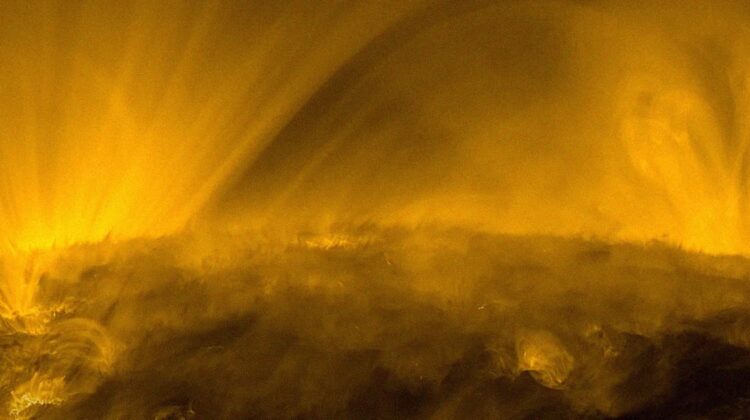
The European Space Agency (ESA) has unveiled a mesmerizing spectacle captured by its Solar Orbiter, offering an unprecedented glimpse into the Sun’s tumultuous domain. The stunning footage, recorded last year, showcases the Sun’s turbulent surface in vivid detail, presenting a surreal vista reminiscent of an otherworldly hellscape.
The Solar Orbiter’s daring maneuver brought it within striking distance of the Sun, providing a front-row seat to the cosmic drama unfolding on its fiery surface. From this perilously close vantage point, the spacecraft captured a dynamic panorama of energized particles erupting from the Sun’s lower atmosphere, resembling ethereal “coronal rain” and punctuated by eruptions of plasma that speckle a fuzzy, moss-like “coronal” surface.

During its descent on September 27, the Solar Orbiter’s Extreme Ultraviolet Imager (EUI) documented the Sun’s surface from a distance roughly equivalent to a third of the gap between Earth and its celestial neighbor. This proximity allowed for unparalleled observations of solar phenomena, including the measurement of solar winds that would later sweep past NASA’s Parker Solar Probe, facilitating collaborative research efforts between the two space agencies.
The footage reveals towering columns of gas known as spicules, towering to heights surpassing 6,200 miles. Even seemingly diminutive eruptions, such as the one captured at the 22-second mark, dwarf the scale of our planet, underscoring the sheer magnitude of solar activity.
Notably, the video highlights the stark temperature contrast within the Sun’s atmosphere. Dark, cooler strands of “coronal rain” visible around the 30-second mark stand in stark contrast to the searing brightness of the background, where temperatures soar to approximately a million degrees Celsius.
While the Solar Orbiter’s close encounters with the Sun offer unparalleled insights into solar dynamics, it’s important to recognize the groundbreaking achievements of NASA’s Parker Solar Probe. Although the latter holds the record for the closest flyby of the Sun, its primary focus lies in other scientific pursuits. It is through the combined efforts of both spacecraft that humanity has been afforded such breathtaking views of our star’s enigmatic realm.
In unveiling this captivating footage, the ESA underscores the invaluable contributions of space exploration in unraveling the mysteries of our solar system. As we continue to push the boundaries of scientific inquiry, each new revelation brings us closer to understanding the cosmic forces that shape our universe.

Leave a Reply